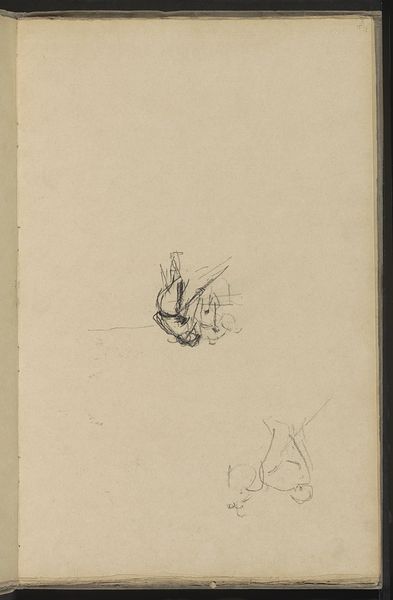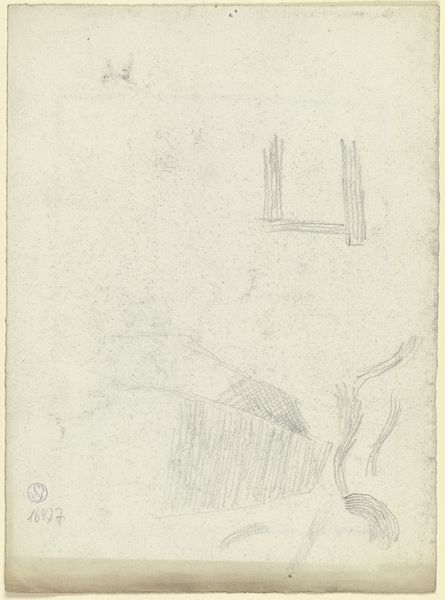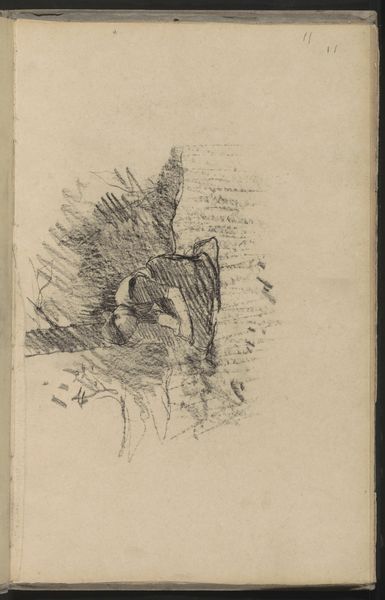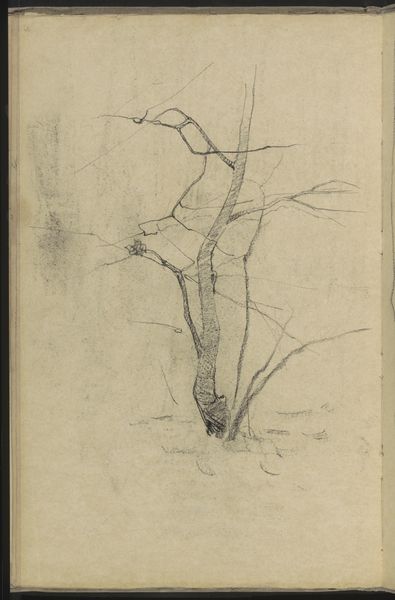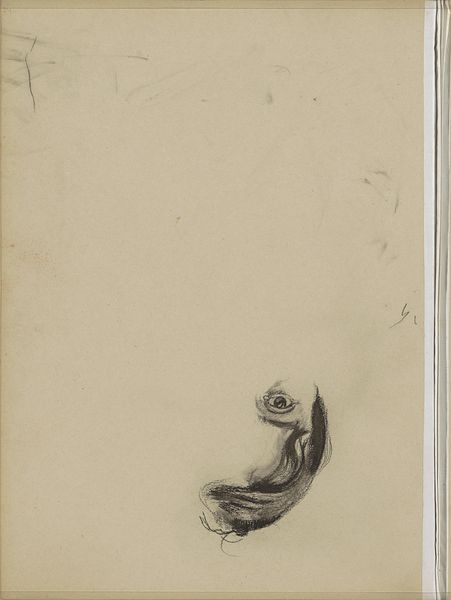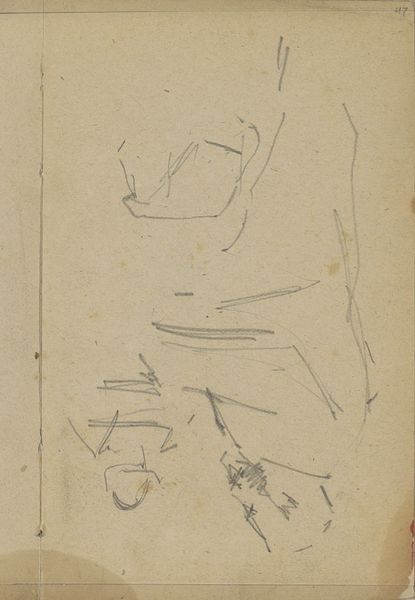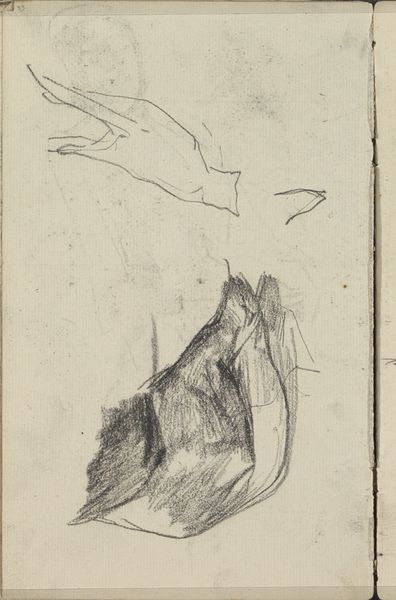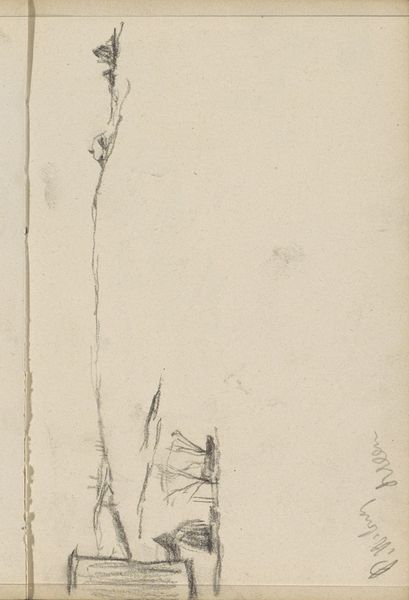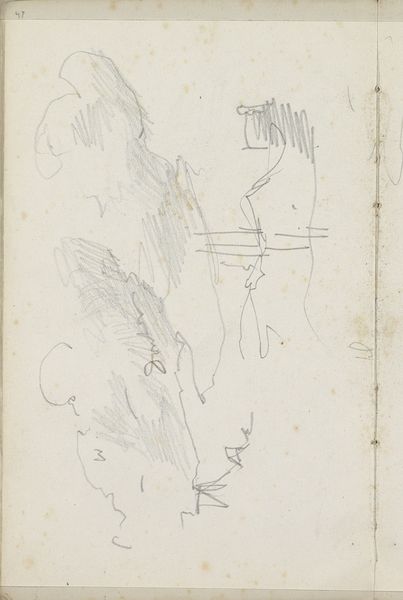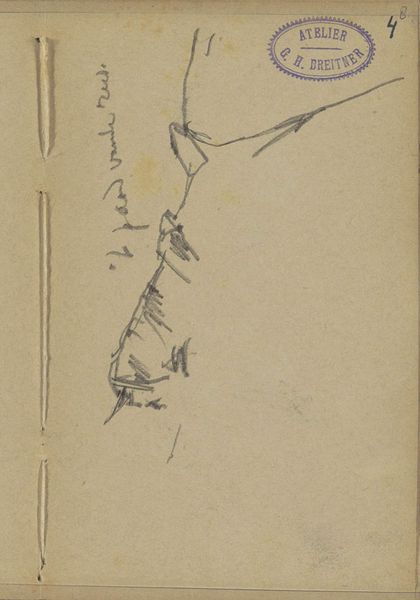
drawing, pencil
#
drawing
#
pencil sketch
#
landscape
#
pencil
Copyright: Rijks Museum: Open Domain
Curator: I’m struck by the sheer simplicity of this sketch. The lightness of the pencil, the sparse use of line… it creates an incredible sense of openness. Editor: That's true, this drawing by Willem Witsen, titled "Sheep and a Landscape," believed to have been made between 1884 and 1887, holds a world of understated symbolic weight, though it appears deceptively simple. At first glance, it is almost childlike. What catches my eye are the stark lines—it gives it a real weight that contrasts with your feelings about its openness. Curator: It does feel almost ephemeral. Look at the composition. We have the rough, almost scribbled landscape at the top and the more defined, yet still quite minimal, depiction of the sheep below. How do you read that division? Editor: I believe it highlights humanity’s age-old tension with the natural world. The indistinct upper landscape represents the chaotic forces of nature; meanwhile, the grounded sheep is tamed, held captive within this…drawing. It has a sort of haunting and melancholic vibe. What did Witsen want to express? Was he merely depicting the natural environment as a passive thing to be mastered? Or, could he hint at its fragility under such rule? Curator: I hadn't considered the implied dominion over the sheep. From a formal perspective, I’m interested in how Witsen used the white space of the page itself as an active element, giving breath to this scene. It does create an impression that we look not at the landscape only, but at the idea of the landscape or a very brief memory of one. And then there's that striking darkness in the lower-left corner. Is that meant to make us uncomfortable? Is it a hidden mark, even perhaps signature, or blemish? Editor: I think its presence evokes something from the shadow side of Dutch pastoral fantasies, something unsaid and perhaps unpleasant regarding humans’ reliance on nature, while also suggesting life’s inevitable stains and corruption. That shadow throws a spanner in the idealistic harmony of nature—and it might even highlight, dare I suggest, a bit of guilt! Curator: Perhaps the true power of "Sheep and a Landscape" is precisely how incomplete and suggestive it is. We, as viewers, become active participants, filling in the gaps with our own interpretations, projecting meaning onto its very sparse details. Editor: Indeed, its symbolic richness stems from this evocative quality, prompting each observer to consider the deeper implications of this unassuming pastoral representation, while asking if perhaps humankind should act as gentle keepers and respect the inherent sanctity of that bond. It challenges simplistic views by highlighting the latent tension inherent in nature.
Comments
No comments
Be the first to comment and join the conversation on the ultimate creative platform.
